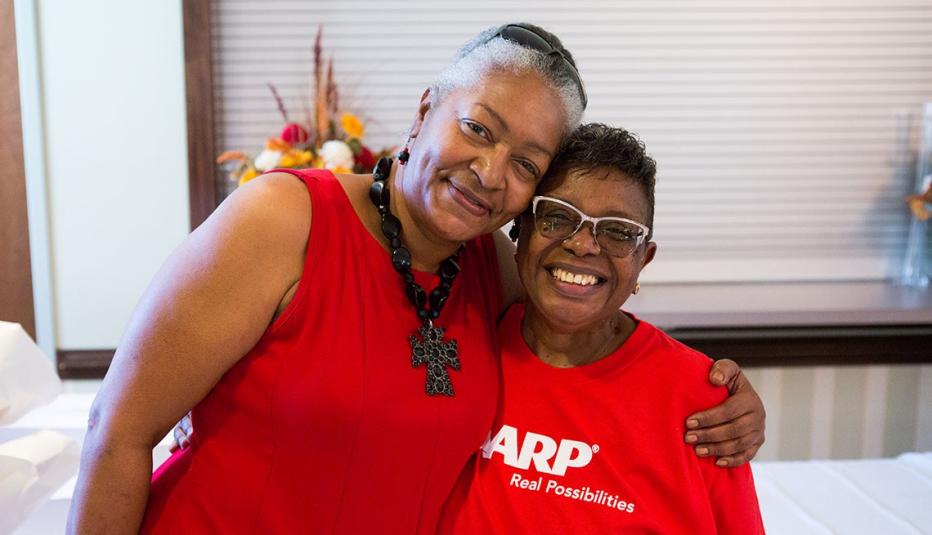AARP Hearing Center


Overview
Since 1997, AARP periodically has tracked trends in social and community involvement and civic participation among mid-life and older adults. And, since that time, much has changed: 9/11, an aging society and growing multicultural population, a greater emphasis on international relations and security, economic recessions, increased use of mobile technology and social media, a workplace characterized by longer hours and telecommuting, and distrust and apathy with government leadership—especially at the national level. These trends can lead to decreased social and community involvement or provide the opportunity for greater connection and engagement with others both locally and nationally.
This study presents the findings of a 2014 survey of mid-life and older adults (age 50+) regarding several key areas of social and community involvement, including:
- Their perceived level of influence in making a difference on problems that exist in their community.
- The number of groups and organizations to which they belong.
- Their level of involvement in civic and community activities.
- The frequency with which they vote in Presidential and local elections.
- Their rate of volunteering—for organizations and/or on their own.
- Their rate of charitable giving
- Demographic and other factors that influence their level of civic engagement.
This study also examines how these activities and perceptions have changed over time, by comparing findings from 2014 with that of prior years.
Key Findings:
- Socioeconomic status (i.e., total household income and education level) and holding a perception that one can make a difference on problems that exist in their community are top predictors of 50+ civic engagement. The more likely one feels that he or she has these resources and holds these perceptions, the higher his or her level of civic engagement is likely to be.
- Perceptions of influence have declined over the years among the 50+. Specifically, the share of the 50+ who believe that they have either a lot or a moderate amount of influence when joined with others declined 7 percentage points from 2012 and an overall total of 20 percentage points from 1997. Likewise, the share of people who feel that they have either a lot or a moderate amount of influence when acting alone declined 5 percentage points from 2012 and an overall total of 7 percentage points from 1997.
- Group Membership. Both the average number of membership types (3.0) and the total number of memberships overall, regardless of type (5.3) have increased among the 50+ since 2009.
- Civic and Community Involvement is fairly low among the 50+ (i.e., they participate in an average of 2.4 activities out of a possible 11 activities per year). This is a slight decline from 2012 (2.5).
- Volunteering. Since 2012, the rate of formal volunteering (i.e., volunteering for organizations) has decreased by 8 percentage points. In contrast, informal volunteering (i.e., volunteering on one’s own—not for an organization) has increased overall by 6 percentage points since 2012. Volunteering both for an organization and on one’s own has held steady since 2012, with 43 percent of 50+ adults reporting this in 2014.
- Charitable Giving. Charitable giving among the 50+ has declined slightly, although it is still a common occurrence among this age group. Seven in ten 50+ adults reported donating to charitable and/or religious causes in 2014. (This compares with 73 percent in 2012 and 72 percent in 2009.)
- Voting. Voting in both Presidential and local elections continues to decline among the 50+. Specifically, voting in Presidential elections declined 6 percentage points (from 81% in 2009 to 75% in 2014); and voting in local elections declined 7 percentage points (from 58% in 2009 to 51% in 2014).
Implications for the decline in perceptions of influence and the rise of discount stores/club memberships on 50+ civic engagement are presented in the report.
To see how data from this study can help brands reframe aging, check out our data story, Is Your Brand Missing Out on the 50+ Market?
Methodology
The telephone interviews were conducted in English and Spanish by SSI for AARP during August 3-26, 2014. Respondents included a national address-based sample of 3,003 adults age 50 years and older. Survey responses were weighted by age, gender, race/ethnicity and other key characteristics. For more information contact Alicia Williams at ARWilliams@aarp.org.






























































